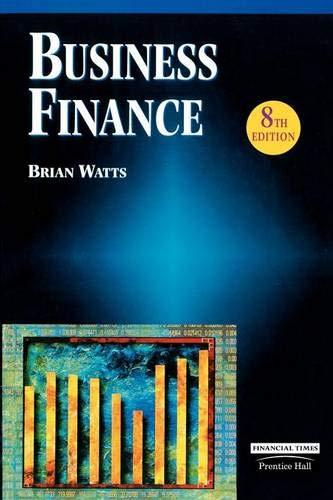Question
Consider the Taylor-Rule equation and the following values given: t = the actual annual expected inflation rate at time t =? * = the target
Consider the Taylor-Rule equation and the following values given:
 t = the actual annual expected inflation rate at time t =?
t = the actual annual expected inflation rate at time t =?
 * = the target annual expected inflation rate = 2.0%
* = the target annual expected inflation rate = 2.0%
y t = the actual annual GDP growth rate at time t = 3.5%
t = the actual annual GDP growth rate at time t = 3.5%
y*  = the economys potential annual GDP growth rate = 2.5%
= the economys potential annual GDP growth rate = 2.5%
r * = the neutral real fed funds rate = 2.0%
= .5
iFFt = the nominal Fed Funds target rate at time t = 6.5%
Lets say that we know that: (iFFt) the nominal Fed Funds target rate at time t is = 6.5%, () is = .5, (r *) the neutral real fed funds rate is = 2%, (yt) actual annual GDP growth rate at time t is = 3.5%, and (y*) the economys potential annual GDP growth rate is = 2.5%.
*Given the aforementioned information, derive the previously unknown t , the actual annual inflation expectations rate at time t, through utilizing some simple algebra. Instead of plugging in the values and deriving the nominal fed funds target rate, like usual, plug in all the previously given numeric values and algebraically solve for, again, the unknown value for t
, the actual annual inflation expectations rate at time t, through utilizing some simple algebra. Instead of plugging in the values and deriving the nominal fed funds target rate, like usual, plug in all the previously given numeric values and algebraically solve for, again, the unknown value for t , the actual annual inflation expectations rate at time t. Just remember to combine like terms when solving.
, the actual annual inflation expectations rate at time t. Just remember to combine like terms when solving.
Step by Step Solution
There are 3 Steps involved in it
Step: 1

Get Instant Access to Expert-Tailored Solutions
See step-by-step solutions with expert insights and AI powered tools for academic success
Step: 2

Step: 3

Ace Your Homework with AI
Get the answers you need in no time with our AI-driven, step-by-step assistance
Get Started


